 Metropolis Records continues their ambitious LPD reissue campaign with an expanded and remastered edition of this oft-fascinating album from the band's celebrated mid-'80s hot streak. According to the band, Island of Jewels was "the natural successor" to The Tower, but it was chronologically sandwiched between two of the Dots' most beloved albums from the era (1985's Asylum and 1988's Any Day Now). Being eclipsed on either side by arguably superior albums has not been optimal for Island of Jewels' stature within the LPD canon, yet it still captured the band in legitimately inspired form (albeit in service of an especially bleak vision this time around). As I did not start delving into the Dots' oeuvre until the mid-'90s (I was lured in by The Tear Garden), I still find it a bit difficult to embrace some of the conspicuously "'80s" elements from this particular phase, as the synth sounds and slap/fretless bass themes have not aged terribly well. Then again, it seems deeply wrong-headed to take issue with the tools that the band used to craft such a playfully surreal and endearing collection of songs, as only a fool would let passing stylistic trends rob them of their sense of wonder. While I would describe Island of Jewels as a more of an acquired taste than some of the surrounding releases, it is a taste worth acquiring, as this album is a delightfully hook-filled and hallucinatory world to immerse oneself in.
Metropolis Records continues their ambitious LPD reissue campaign with an expanded and remastered edition of this oft-fascinating album from the band's celebrated mid-'80s hot streak. According to the band, Island of Jewels was "the natural successor" to The Tower, but it was chronologically sandwiched between two of the Dots' most beloved albums from the era (1985's Asylum and 1988's Any Day Now). Being eclipsed on either side by arguably superior albums has not been optimal for Island of Jewels' stature within the LPD canon, yet it still captured the band in legitimately inspired form (albeit in service of an especially bleak vision this time around). As I did not start delving into the Dots' oeuvre until the mid-'90s (I was lured in by The Tear Garden), I still find it a bit difficult to embrace some of the conspicuously "'80s" elements from this particular phase, as the synth sounds and slap/fretless bass themes have not aged terribly well. Then again, it seems deeply wrong-headed to take issue with the tools that the band used to craft such a playfully surreal and endearing collection of songs, as only a fool would let passing stylistic trends rob them of their sense of wonder. While I would describe Island of Jewels as a more of an acquired taste than some of the surrounding releases, it is a taste worth acquiring, as this album is a delightfully hook-filled and hallucinatory world to immerse oneself in.
Metropolis
Belatedly delving into '80s-era Legendary Pink Dots is a curious experience, as albums like this one capture an incredibly imaginative and talented group of musicians still somewhat in the thrall of their influences and the popular instrumentation of the time. As a result, a lot of this album sounds like someone from the Victorian era became obsessed with '70s prog and set out to make a half-carnivalesque/half-melancholy concept album armed with a fretless bass and an inexpensive synthesizer. Given that singular vibe, even the weakest songs are compellingly weird, but the tradeoff is that the best songs almost always have some kind of irksome imperfection. Perhaps that latter part works in the band's favor entertainment-wise though, as the dated sounds undercut Edward Ka-Spel's bleakness to create something more charming and fun. The first half of the album is teeming with such skewed delights. My favorite is the wonky, lurching "Dairy," which feels like a unhinged magician with a drum machine leading a dance party on a disturbingly Sid & Marty Krofft-inspired children's show. "The Red and the Black" deserves an honorable mention too, as it sounds like a macabre art-pop ensemble performing a shape-shifting cabaret show, but a mischievous bassist decided to wrong-foot everyone by obsessively playing a cheerily cartoonish riff over and over again.
Of course, there are some legitimate Dots classics here too, such as the neo-classical goth-pop balladry of "Shock of Contact." To some degree, it feels like a prog band doing a spacey electric cover of an old harpsichord piece, but that aspect is eclipsed by an especially haunting and beautiful vocal performance from Ka-Spel. The other big highlight comes in the form of the "Our Lady" trilogy near the end of the album. The first part, "Our Lady In Chambers," feels like a darkly lysergic piano ballad plucked from a fairy tale, but one propelled by a thudding drum machine, liquid fretless bass riffage, harmonized lead guitar, dramatic violin flourishes, and occasional stabs of fake horns. Ka-Spel's vocals are wonderfully tender, poetic, and beautiful, so it is easy to imagine a contemporary live version of the piece being an absolute stunner. I was also impressed by "Our Lady of Darkness," which initially sounds like an absinthe-drunk mad genius performing a one-man opera in his mountain castle, but unexpectedly erupts into a very cool and intricate instrumental outro. Notably, the vinyl and digital versions of this reissue enhance the original twelve-song album with eight freewheeling bonus pieces, and they make this latest incarnation considerably more fascinating than the original. My notes on the bonus material are full of phrases like "terrifying German expressionist puppet show set in space" or "sounds like a disco-era erotic vampire musical on rollerskates," and those are not even the pieces identified as "Version Ridiculous" (an honor reserved solely for “No Bell No Prize"). Needless to say, those are exquisite experiences that are impossible to find elsewhere, but the biggest surprise was "This Could Be The End (Alternative)," which radically transforms Asylum's closer into a ghostly folk gem with Attrition's Julia Niblock on vocals. I would not have a expected a bonus track with Ka-Spel on the sidelines to steal the show, but the timeless "folk horror" feel makes it one of my favorite outliers in the LPD canon.
Samples can be found here.
 Titled after a phrase in Richard Meltzer's writings to do with an eternal sense of perseverance through sound,The Hand As Dealt is dedicated to Terry Riley, Don Cherry, Alice Coltrane, and Egyptian singer Umm Khoultoum (lesser known in the West, but the incomparable and legendary "Orient Star” and “The Fourth Pyramid” in the East). Inspired by the notion that through profound adversity there is a higher reason to play, inherent in the sound itself, Derek Monypeny plays this hand, simply and brilliantly. With his guitar tuned to DADGAD, and an indian instrument called the shahi baaja tuned somewhere in the region of D major, he also, in terms of equipment and technique, pays mind to a path trod by Riley, Reich, Oliveros, Fripp, and Eno.
Titled after a phrase in Richard Meltzer's writings to do with an eternal sense of perseverance through sound,The Hand As Dealt is dedicated to Terry Riley, Don Cherry, Alice Coltrane, and Egyptian singer Umm Khoultoum (lesser known in the West, but the incomparable and legendary "Orient Star” and “The Fourth Pyramid” in the East). Inspired by the notion that through profound adversity there is a higher reason to play, inherent in the sound itself, Derek Monypeny plays this hand, simply and brilliantly. With his guitar tuned to DADGAD, and an indian instrument called the shahi baaja tuned somewhere in the region of D major, he also, in terms of equipment and technique, pays mind to a path trod by Riley, Reich, Oliveros, Fripp, and Eno.

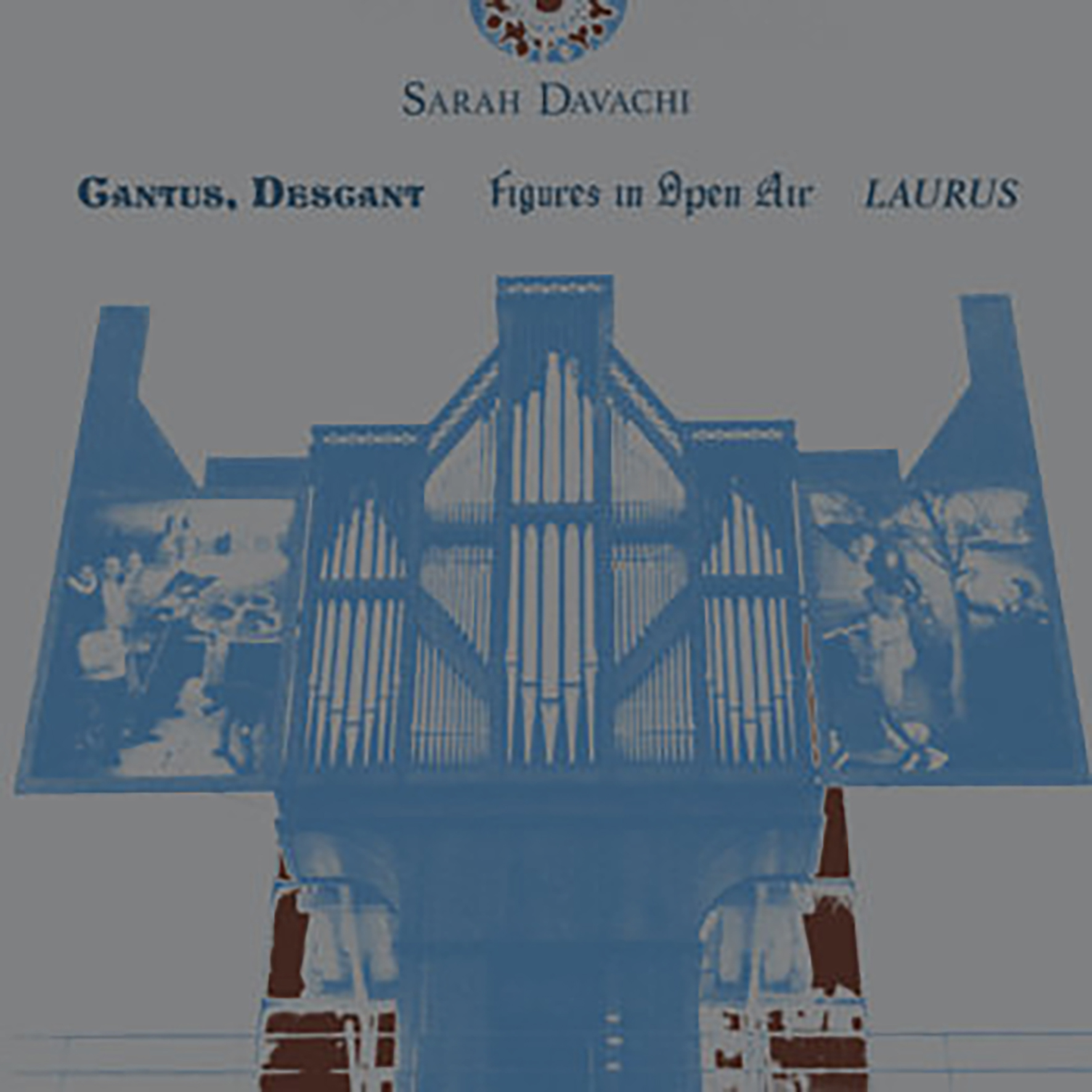 This five-CD boxed set ambitiously compiles all three of Davachi's interrelated 2020 albums released on her own Late Music imprint. Given that Figures in Open Air alone features two pieces that clock in around an hour each, this collection presents an absolutely overwhelming amount of similar-sounding material. That said, Cantus, Descant seems to be one of Davachi's more beloved releases among fans despite its unswerving devotion to pipe organ-centered minimalism. That makes this collection an inspired idea, as it presents that constrained vision in three differing stages: its "more raw and improvisational" beginnings (Laurus), the polished and meticulously crafted studio album, and some great live performances from the period when this era was taking shape. Each of the three albums features some sublime highlights, which will likely inspire me to curate my own condensed version. That distillation will give me the sustained and focused beauty that I want from a Sarah Davachi album, but Cantus Figures Laurus can also provide a calming five-hour respite in a cathedral of drones. It is not unlike a portable version of La Monte Young's Dream House, if he were into church music instead of psychotropic Just Intonation harmonies. Hell, it can even be an interactive one, as listeners can enhance their experience with their own Marian Zazeela-inspired light shows.
This five-CD boxed set ambitiously compiles all three of Davachi's interrelated 2020 albums released on her own Late Music imprint. Given that Figures in Open Air alone features two pieces that clock in around an hour each, this collection presents an absolutely overwhelming amount of similar-sounding material. That said, Cantus, Descant seems to be one of Davachi's more beloved releases among fans despite its unswerving devotion to pipe organ-centered minimalism. That makes this collection an inspired idea, as it presents that constrained vision in three differing stages: its "more raw and improvisational" beginnings (Laurus), the polished and meticulously crafted studio album, and some great live performances from the period when this era was taking shape. Each of the three albums features some sublime highlights, which will likely inspire me to curate my own condensed version. That distillation will give me the sustained and focused beauty that I want from a Sarah Davachi album, but Cantus Figures Laurus can also provide a calming five-hour respite in a cathedral of drones. It is not unlike a portable version of La Monte Young's Dream House, if he were into church music instead of psychotropic Just Intonation harmonies. Hell, it can even be an interactive one, as listeners can enhance their experience with their own Marian Zazeela-inspired light shows. Metropolis Records continues their ambitious LPD reissue campaign with an expanded and remastered edition of this oft-fascinating album from the band's celebrated mid-'80s hot streak. According to the band, Island of Jewels was "the natural successor" to The Tower, but it was chronologically sandwiched between two of the Dots' most beloved albums from the era (1985's Asylum and 1988's Any Day Now). Being eclipsed on either side by arguably superior albums has not been optimal for Island of Jewels' stature within the LPD canon, yet it still captured the band in legitimately inspired form (albeit in service of an especially bleak vision this time around). As I did not start delving into the Dots' oeuvre until the mid-'90s (I was lured in by The Tear Garden), I still find it a bit difficult to embrace some of the conspicuously "'80s" elements from this particular phase, as the synth sounds and slap/fretless bass themes have not aged terribly well. Then again, it seems deeply wrong-headed to take issue with the tools that the band used to craft such a playfully surreal and endearing collection of songs, as only a fool would let passing stylistic trends rob them of their sense of wonder. While I would describe Island of Jewels as a more of an acquired taste than some of the surrounding releases, it is a taste worth acquiring, as this album is a delightfully hook-filled and hallucinatory world to immerse oneself in.
Metropolis Records continues their ambitious LPD reissue campaign with an expanded and remastered edition of this oft-fascinating album from the band's celebrated mid-'80s hot streak. According to the band, Island of Jewels was "the natural successor" to The Tower, but it was chronologically sandwiched between two of the Dots' most beloved albums from the era (1985's Asylum and 1988's Any Day Now). Being eclipsed on either side by arguably superior albums has not been optimal for Island of Jewels' stature within the LPD canon, yet it still captured the band in legitimately inspired form (albeit in service of an especially bleak vision this time around). As I did not start delving into the Dots' oeuvre until the mid-'90s (I was lured in by The Tear Garden), I still find it a bit difficult to embrace some of the conspicuously "'80s" elements from this particular phase, as the synth sounds and slap/fretless bass themes have not aged terribly well. Then again, it seems deeply wrong-headed to take issue with the tools that the band used to craft such a playfully surreal and endearing collection of songs, as only a fool would let passing stylistic trends rob them of their sense of wonder. While I would describe Island of Jewels as a more of an acquired taste than some of the surrounding releases, it is a taste worth acquiring, as this album is a delightfully hook-filled and hallucinatory world to immerse oneself in.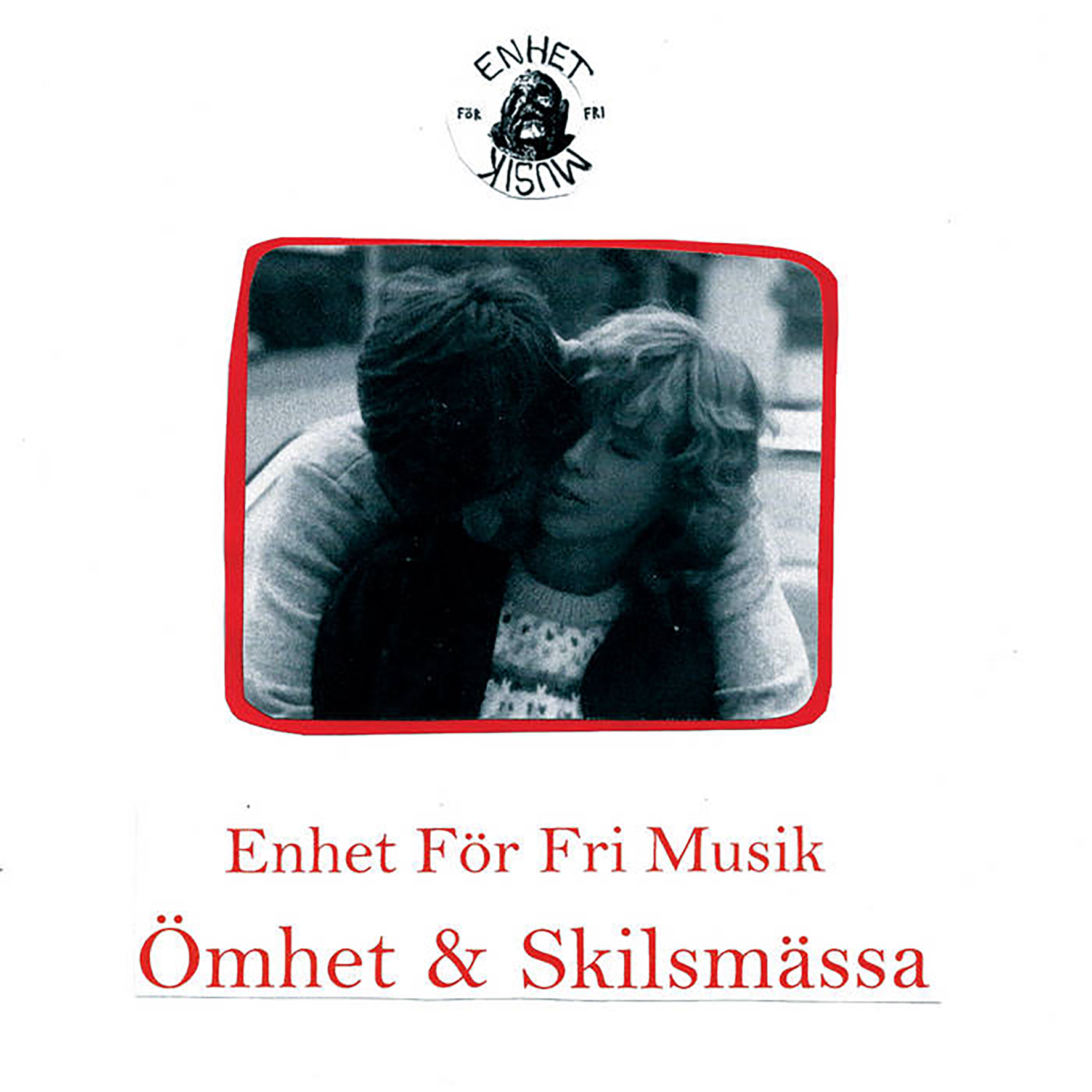 This latest release from my favorite Swedish free music collective is apparently "a concept album on relationships, family values and broken promises." I will have to take their word on that, as I do not understand Swedish, but Ömhet & Skilsmässa ("Tenderness & Divorce") does have a very different (and possibly more wholesome) feel than some previous releases. How truly wholesome an album can be when it features Sewer Elections' Dan Johansson is up for debate, but I do not doubt the collective's commitment to carrying on the grand tradition of freeform Swedish psychedelia a la Pärson Sound, Träd Gräs Och Stenar, and others. That said, Enhet För Fri Musik have their own wonderful thing going and I would be hard pressed to think of any other artists this devoted to guileless simplicity and organic spontaneousness. Admittedly, I was secretly hoping the quintet would revisit the sound collage territory of "Fragment Av En Midsommarnattsdröm" this time around, but my consolation prize is that the Jandek-ian discordant acoustic guitars are kept to a minimum. Instead, this album feels like the impressionistic audio diary of a teenage girl who is growing up in a pleasant rural commune, as it uncannily evokes the wonder and openness of someone totally indifferent to popular trends and not yet hardened by the endless disappointment and inhumanity of the outside world.
This latest release from my favorite Swedish free music collective is apparently "a concept album on relationships, family values and broken promises." I will have to take their word on that, as I do not understand Swedish, but Ömhet & Skilsmässa ("Tenderness & Divorce") does have a very different (and possibly more wholesome) feel than some previous releases. How truly wholesome an album can be when it features Sewer Elections' Dan Johansson is up for debate, but I do not doubt the collective's commitment to carrying on the grand tradition of freeform Swedish psychedelia a la Pärson Sound, Träd Gräs Och Stenar, and others. That said, Enhet För Fri Musik have their own wonderful thing going and I would be hard pressed to think of any other artists this devoted to guileless simplicity and organic spontaneousness. Admittedly, I was secretly hoping the quintet would revisit the sound collage territory of "Fragment Av En Midsommarnattsdröm" this time around, but my consolation prize is that the Jandek-ian discordant acoustic guitars are kept to a minimum. Instead, this album feels like the impressionistic audio diary of a teenage girl who is growing up in a pleasant rural commune, as it uncannily evokes the wonder and openness of someone totally indifferent to popular trends and not yet hardened by the endless disappointment and inhumanity of the outside world. Back in 2009, Duane Pitre curated a CD entitled The Harmonic Series that brought together an array of artists like Pauline Oliveros and Ellen Fullman for a collection of pieces composed for Just Intonation. Roughly a decade later, Pitre has returned with a considerably more ambitious second volume that enlists "six of the most important emerging voices of contemporary experimental music" for a triple LP extravaganza of longform Just Intonation pieces. To his credit, Pitre truly did assemble an impressive lineup for this release, as artists like Caterina Barbieri and Kali Malone are undeniably leading lights of the current vanguard. In fact, everybody here has a history of making great or provocative music, though I am not sure everyone was brimming with great ideas for a bombshell Just Intonation opus, as it seems like a daunting challenge for anyone attempting melodies. Given that, The Harmonic Series II is more of a fascinating mixed bag than a uniform triumph, though roughly half the artists managed to conjure up something that exceeded my expectations. And regardless of how well some pieces do or do not work, this collection has definitely expanded my idea of what is possible with Just Intonation.
Back in 2009, Duane Pitre curated a CD entitled The Harmonic Series that brought together an array of artists like Pauline Oliveros and Ellen Fullman for a collection of pieces composed for Just Intonation. Roughly a decade later, Pitre has returned with a considerably more ambitious second volume that enlists "six of the most important emerging voices of contemporary experimental music" for a triple LP extravaganza of longform Just Intonation pieces. To his credit, Pitre truly did assemble an impressive lineup for this release, as artists like Caterina Barbieri and Kali Malone are undeniably leading lights of the current vanguard. In fact, everybody here has a history of making great or provocative music, though I am not sure everyone was brimming with great ideas for a bombshell Just Intonation opus, as it seems like a daunting challenge for anyone attempting melodies. Given that, The Harmonic Series II is more of a fascinating mixed bag than a uniform triumph, though roughly half the artists managed to conjure up something that exceeded my expectations. And regardless of how well some pieces do or do not work, this collection has definitely expanded my idea of what is possible with Just Intonation.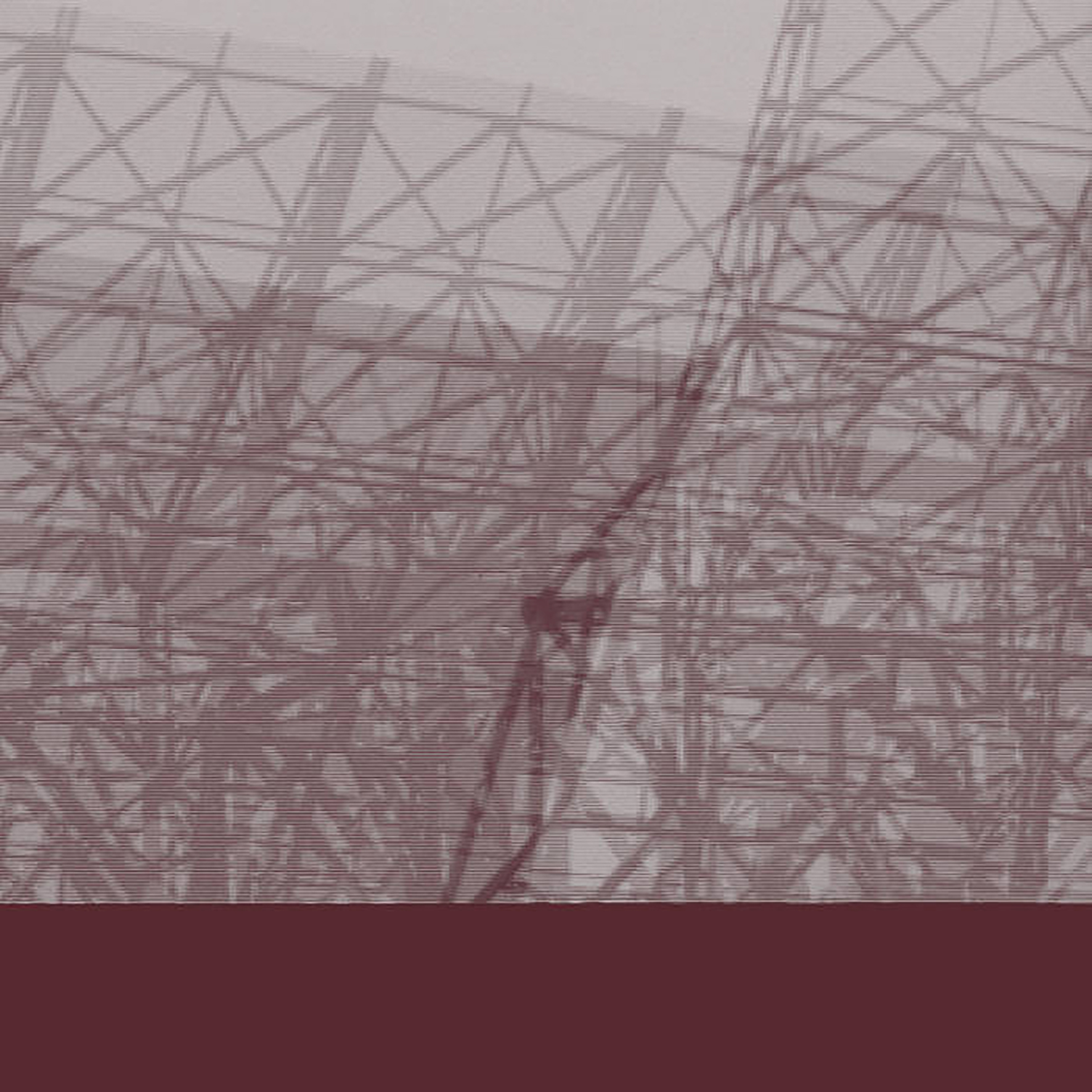 This latest release from Robin Rimbaud is hopefully the first of many deep dives into the Scanner archives, as he ambitiously spent part of his lockdown digitizing and mixing his unreleased work from the '80s. The big story, of course, is that Earthbound Transmissions features some of Rimbaud's early work with appropriated phone conversations that predates Scanner's 1993 eponymous debut. Those scanned calls are only one facet of these recordings, however, as this album documents a formative experimental stage immediately after Rimbaud's acquisition of a "luxuriously expensive" Fostex 280 four-track recorder, which he combined with a Digitech RDS 7.6 Time Machine to make looping, layered sound collages. For the most part, Earthbound Transmission feels like an unusually strong release from the '80s DIY noise cassette scene (albeit more on the "murky ambient" side of the spectrum), but there are also a handful of pieces that legitimately feel like lost Scanner classics.
This latest release from Robin Rimbaud is hopefully the first of many deep dives into the Scanner archives, as he ambitiously spent part of his lockdown digitizing and mixing his unreleased work from the '80s. The big story, of course, is that Earthbound Transmissions features some of Rimbaud's early work with appropriated phone conversations that predates Scanner's 1993 eponymous debut. Those scanned calls are only one facet of these recordings, however, as this album documents a formative experimental stage immediately after Rimbaud's acquisition of a "luxuriously expensive" Fostex 280 four-track recorder, which he combined with a Digitech RDS 7.6 Time Machine to make looping, layered sound collages. For the most part, Earthbound Transmission feels like an unusually strong release from the '80s DIY noise cassette scene (albeit more on the "murky ambient" side of the spectrum), but there are also a handful of pieces that legitimately feel like lost Scanner classics.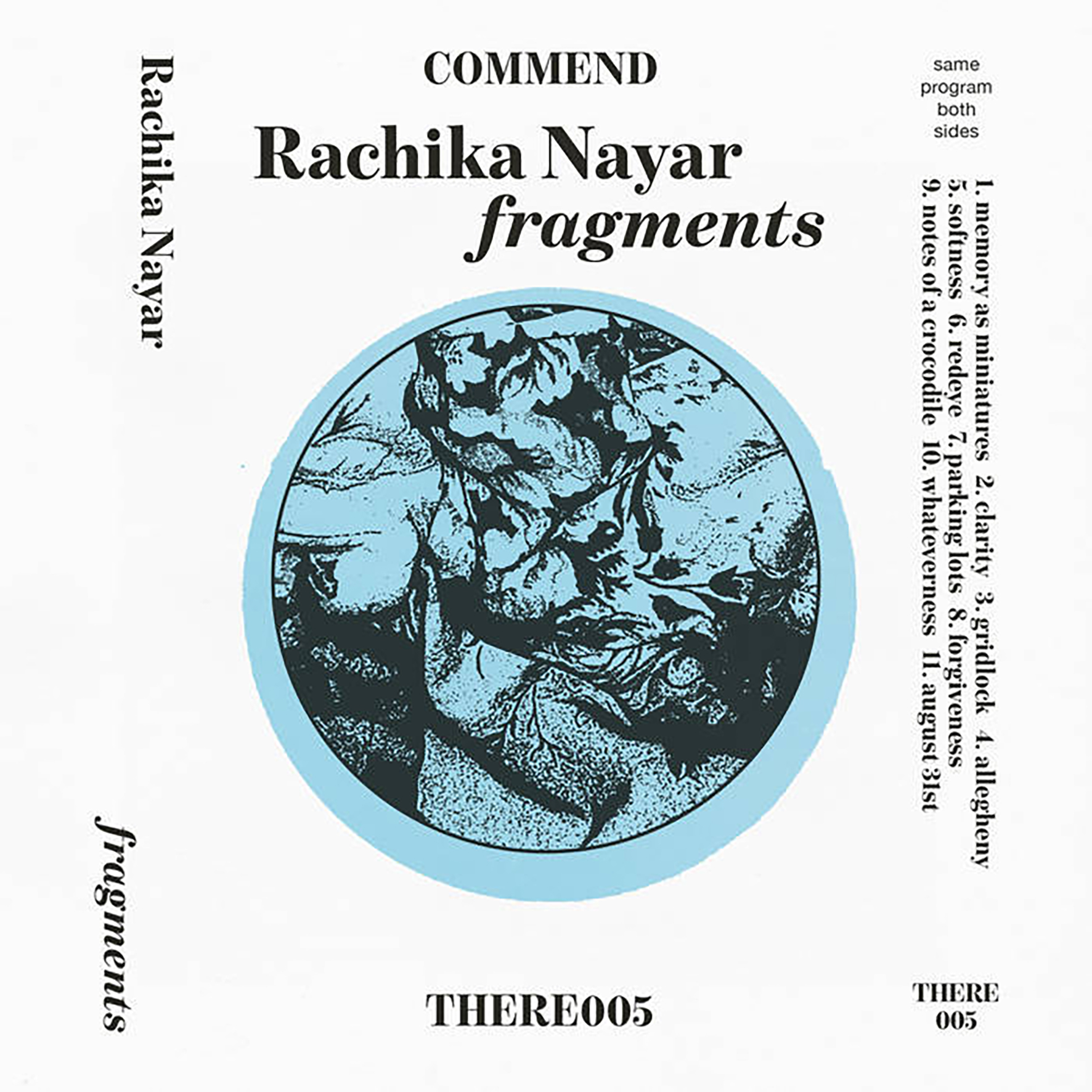 This new EP is something of a sketchbook-like companion piece to Nayar's sublime debut album. More specifically, it is a collection of "sonic miniatures Nayar constructed from guitar loops . . . in the familiar comforts of her own bedroom," as well as a glimpse of what her raw material sounds like before it is processed and reshaped into "grander mutated compositions" like those of Our Hands Against the Dark. In theory, that should make Fragments something of a minor release, but these more simple and intimate pieces are often even better than those of Nayar's more formal work, albeit with the caveat that more than half of these pieces end in under two minutes (and the others do not stick around much longer). Nevertheless, Nayar is an incredibly gifted guitarist with a remarkably strong melodic sensibility and this album is quite a sustained hot streak of great (if ephemeral) ideas. As with her previous album, it is not hard to spot Nayar's influences—in fact, some pieces are even intended as homages to folks like Pat Metheny and Steve Reich. That said, the main touchstones I hear are more hook-minded contemporary artists like Mark McGuire and some classic Midwestern emo. That is always welcome stylistic terrain in my book, but the real beauty of Fragments lies in how often Nayar matches or surpasses her influences at their own games.
This new EP is something of a sketchbook-like companion piece to Nayar's sublime debut album. More specifically, it is a collection of "sonic miniatures Nayar constructed from guitar loops . . . in the familiar comforts of her own bedroom," as well as a glimpse of what her raw material sounds like before it is processed and reshaped into "grander mutated compositions" like those of Our Hands Against the Dark. In theory, that should make Fragments something of a minor release, but these more simple and intimate pieces are often even better than those of Nayar's more formal work, albeit with the caveat that more than half of these pieces end in under two minutes (and the others do not stick around much longer). Nevertheless, Nayar is an incredibly gifted guitarist with a remarkably strong melodic sensibility and this album is quite a sustained hot streak of great (if ephemeral) ideas. As with her previous album, it is not hard to spot Nayar's influences—in fact, some pieces are even intended as homages to folks like Pat Metheny and Steve Reich. That said, the main touchstones I hear are more hook-minded contemporary artists like Mark McGuire and some classic Midwestern emo. That is always welcome stylistic terrain in my book, but the real beauty of Fragments lies in how often Nayar matches or surpasses her influences at their own games.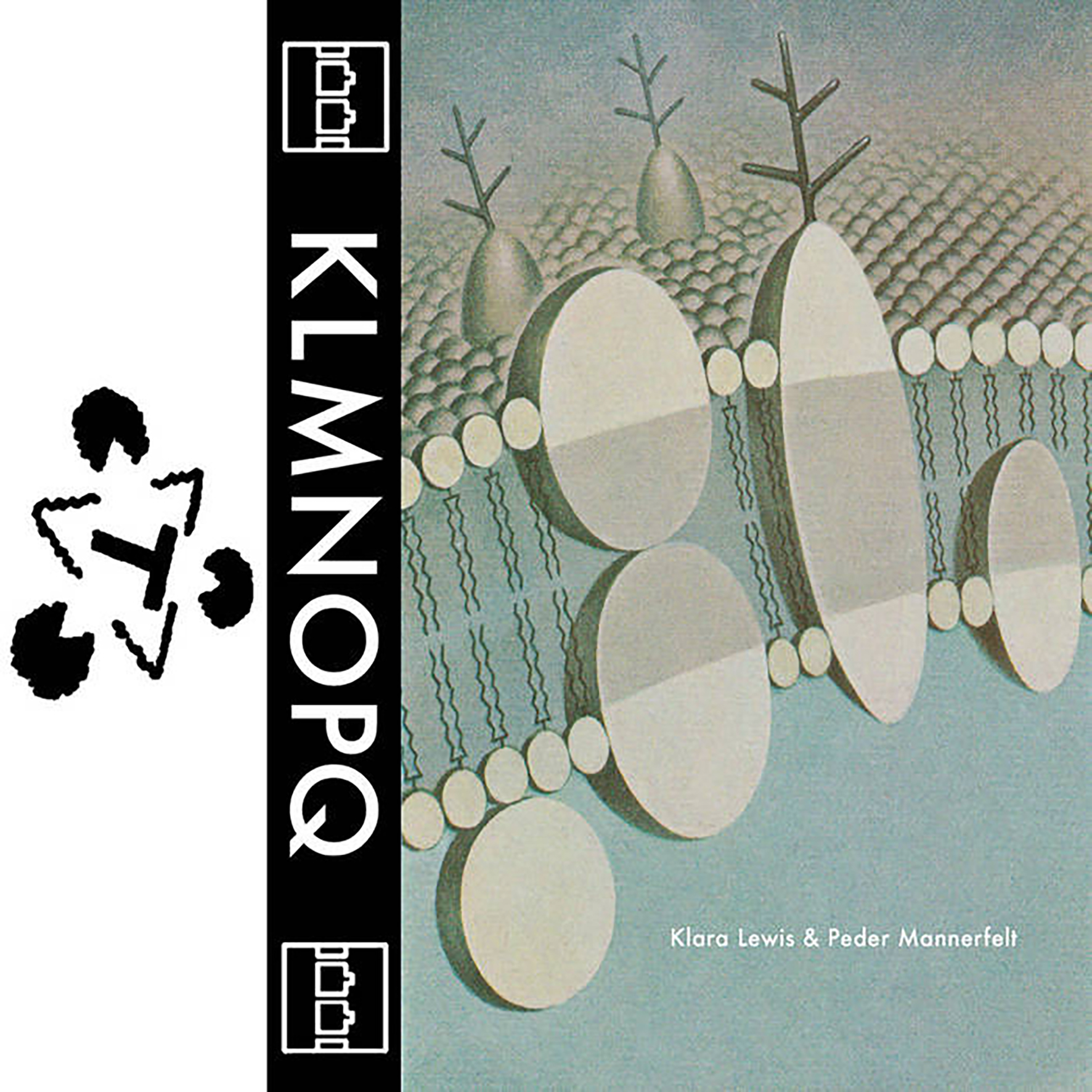 I believe this is the first formal collaboration between these two Sweden-based artists, but the pair have a long history together, as Mannerfelt's label released one of Lewis's early EPs (2014's Msuic). While I was not sure quite what to expect given the breadth of Mannerfelt's oeuvre and Lewis's continuous evolution, I was reasonably certain that this collaboration would be wonderful no matter what shape it took and I was not disappointed. The closest reference point for KLMNOPQ is probably Lewis's killer Ingrid EP, as nearly all of these five songs feature churning, blackened drones or murky, gnarled loops of some kind. The twist, however, is that Mannerfelt and Lewis take that roiling intensity in an unexpectedly playful direction without sacrificing much gravitas. The closing "Full of Piss and Vinegar" captures the duo at the height of their gleefully mischievous loop mangling, as it resembles a nightmarishly chopped-and-screwed mariachi band, yet this entire EP is filled with endearingly inventive and perversely anthemic variations of obsessively looping and psychotropic sound collage.
I believe this is the first formal collaboration between these two Sweden-based artists, but the pair have a long history together, as Mannerfelt's label released one of Lewis's early EPs (2014's Msuic). While I was not sure quite what to expect given the breadth of Mannerfelt's oeuvre and Lewis's continuous evolution, I was reasonably certain that this collaboration would be wonderful no matter what shape it took and I was not disappointed. The closest reference point for KLMNOPQ is probably Lewis's killer Ingrid EP, as nearly all of these five songs feature churning, blackened drones or murky, gnarled loops of some kind. The twist, however, is that Mannerfelt and Lewis take that roiling intensity in an unexpectedly playful direction without sacrificing much gravitas. The closing "Full of Piss and Vinegar" captures the duo at the height of their gleefully mischievous loop mangling, as it resembles a nightmarishly chopped-and-screwed mariachi band, yet this entire EP is filled with endearingly inventive and perversely anthemic variations of obsessively looping and psychotropic sound collage.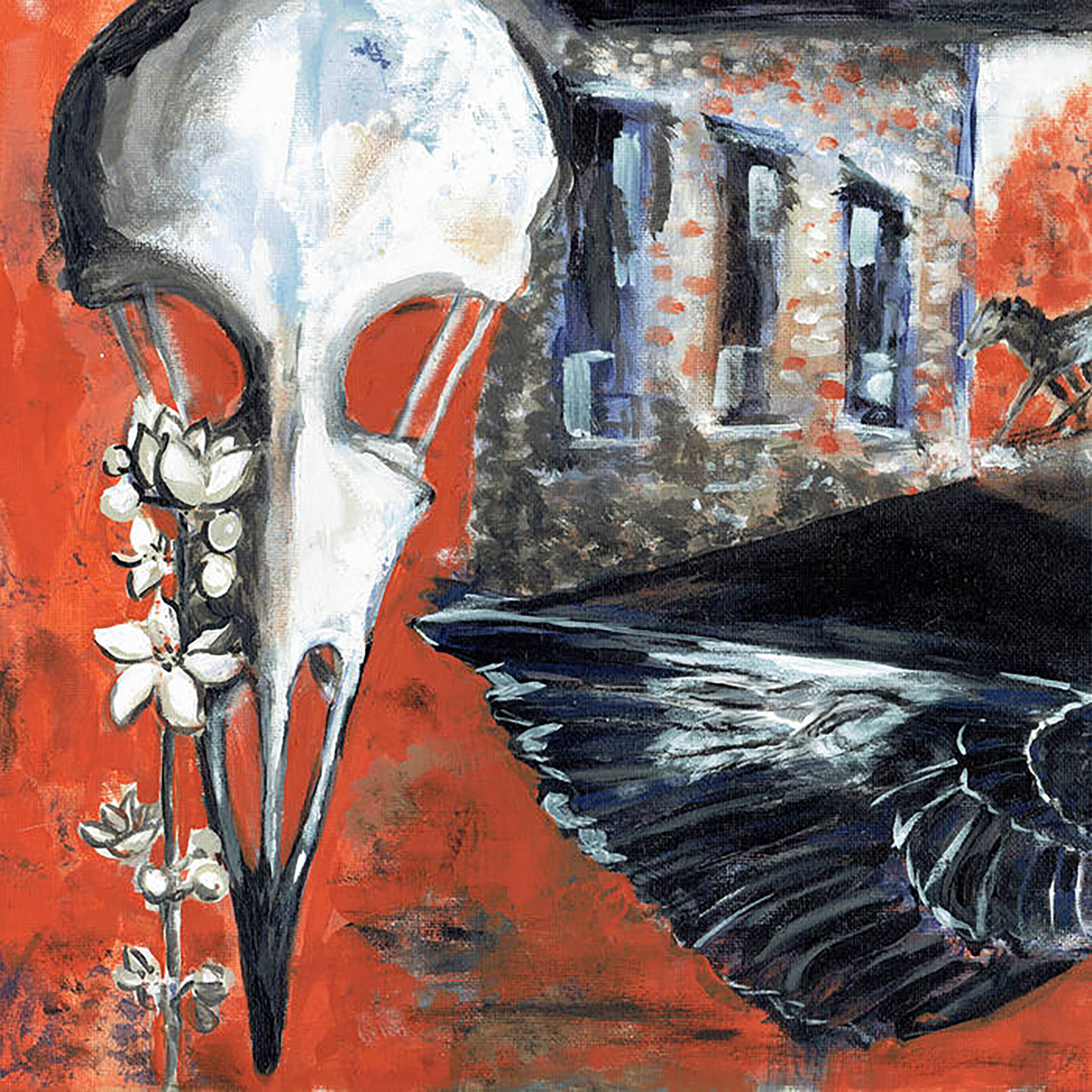
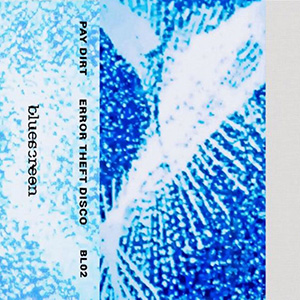 A duo between California artists Victoria Shen and Bryan Day (by way of Nebraska), Error Theft Disco is noise in its purist sense. A disorienting blend of electronics, distortion, and found sounds that never settles down from the first few seconds, the constant flow gives the tape a captivating sense of inertia that functions well in the loud harsh noise vein as well as it does the nuanced, complex sound art one.
A duo between California artists Victoria Shen and Bryan Day (by way of Nebraska), Error Theft Disco is noise in its purist sense. A disorienting blend of electronics, distortion, and found sounds that never settles down from the first few seconds, the constant flow gives the tape a captivating sense of inertia that functions well in the loud harsh noise vein as well as it does the nuanced, complex sound art one.
